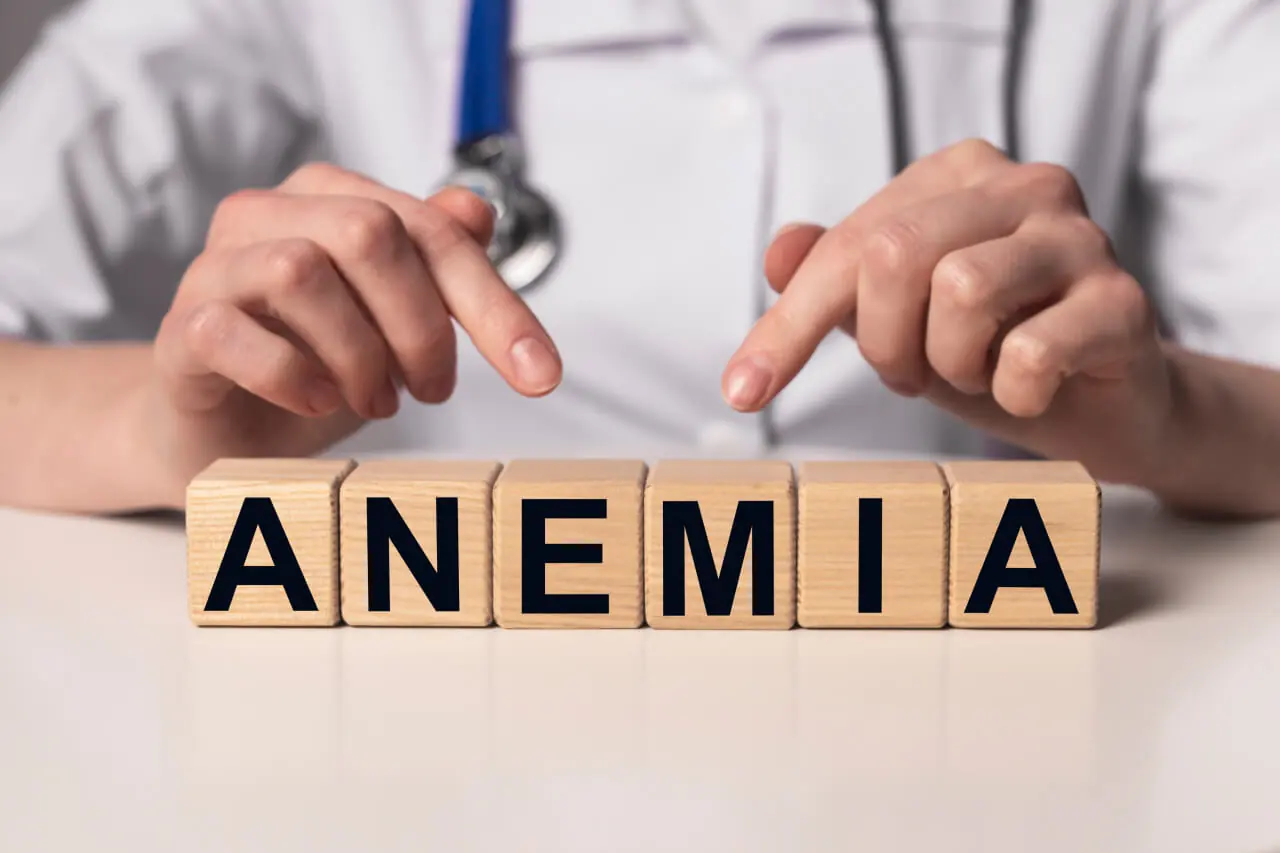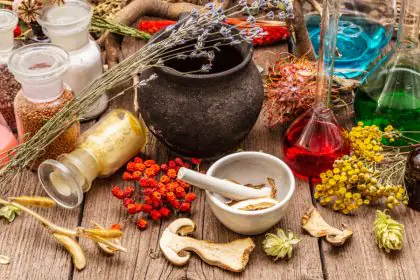Iron-deficiency anemia is a common and treatable condition, but it requires proper diagnosis and management.
Iron is an essential mineral that plays a vital role in many functions of the body, especially in the production of hemoglobin, a protein in red blood cells that carries oxygen to all the tissues and organs.
Without enough iron, the body cannot make enough hemoglobin, and the result is iron-deficiency anemia, a condition in which the blood lacks adequate healthy red blood cells.
Iron-deficiency anemia can cause various symptoms, such as fatigue, weakness, pale skin, shortness of breath, dizziness, and more.
It can also increase the risk of infections, complications during pregnancy, and poor growth and development in children.
In this blog post, we will explain what causes iron-deficiency anemia, how it is diagnosed, how it is treated, and how you can prevent it.
We will also share some tips on how to increase your iron absorption from food and supplements, and improve your health and well-being.
What causes iron-deficiency anemia?
Iron-deficiency anemia occurs when the body does not have enough iron to produce hemoglobin.
This can happen for several reasons, such as:
Inadequate intake of iron
The body gets iron from the food we eat, but some people may not consume enough iron-rich foods, such as meat, poultry, fish, eggs, beans, lentils, nuts, seeds, and fortified cereals.
This can be due to dietary preferences, restrictions, or habits, such as vegetarianism, veganism, or fad diets.
According to the National Institutes of Health (NIH), the recommended dietary allowance (RDA) of iron for adults is 8 milligrams (mg) per day for men and 18 mg per day for women.
For pregnant women, the RDA is 27 mg per day1.
Increased need of iron
The body may need more iron than usual in certain situations, such as during pregnancy, lactation, growth, menstruation, or illness.
For example, pregnant women need more iron to support the growth and development of the fetus and the placenta, and to prevent preterm delivery and low birth weight.
Women who have heavy menstrual bleeding may also lose a lot of iron each month. Children and adolescents need more iron to support their rapid growth and development.
Decreased absorption of iron
The body may not be able to absorb enough iron from the food we eat due to certain factors, such as intestinal disorders, medications, or food interactions.
For example, people who have celiac disease, Crohn’s disease, or gastric bypass surgery may have reduced iron absorption due to damage or alteration of the intestinal lining.
Some medications, such as antacids, proton pump inhibitors, or calcium supplements, may interfere with iron absorption by changing the acidity of the stomach or binding with iron.
Some foods, such as dairy products, tea, coffee, or bran, may also reduce iron absorption by inhibiting the action of enzymes or forming complexes with iron.
Increased loss of iron
The body may lose more iron than usual due to bleeding, either externally or internally.
External bleeding can occur due to injury, surgery, or donation of blood.
Internal bleeding can occur due to various conditions, such as ulcers, polyps, hemorrhoids, diverticulitis, colon cancer, or parasitic infections.
Internal bleeding may not be obvious and may require tests to detect.
How is iron-deficiency anemia diagnosed?
Iron-deficiency anemia can be diagnosed by a doctor based on your medical history, physical examination, and blood tests.
Some of the common blood tests include:
Hemoglobin test
This test measures the amount of hemoglobin in your blood.
Hemoglobin is the part of red blood cells that carries oxygen.
Normal hemoglobin levels vary depending on your age, sex, and altitude, but generally range from 12 to 16 grams per deciliter (g/dL) for women and 13 to 18 g/dL for men.
A low hemoglobin level indicates anemia.
Hematocrit test
This test measures the percentage of your blood volume that is made up of red blood cells.
Normal hematocrit levels vary depending on your age, sex, and altitude, but generally range from 36 to 48 percent for women and 40 to 52 percent for men.
A low hematocrit level indicates anemia.
Complete blood count (CBC)
This test measures the number and size of your red blood cells, white blood cells, and platelets.
A low number or size of red blood cells indicates anemia.
A low number of white blood cells or platelets may indicate other conditions that affect your blood, such as infection or bleeding disorders.
Serum ferritin test
This test measures the amount of ferritin in your blood.
Ferritin is a protein that stores iron in your body.
Normal ferritin levels vary depending on your age and sex, but generally range from 12 to 300 nanograms per milliliter (ng/mL) for men and 12 to 150 ng/mL for women.
A low ferritin level indicates iron-deficiency anemia.
Serum iron test
This test measures the amount of iron in your blood.
Normal iron levels vary depending on your age and sex, but generally range from 60 to 170 micrograms per deciliter (mcg/dL) for men and 50 to 150 mcg/dL for women.
A low iron level indicates iron-deficiency anemia.
Total iron-binding capacity (TIBC) test
This test measures the amount of transferrin in your blood.
Transferrin is a protein that transports iron in your blood.
Normal TIBC levels vary depending on your age and sex, but generally range from 240 to 450 mcg/dL for both men and women.
A high TIBC level indicates iron-deficiency anemia.
Transferrin saturation test
This test measures the percentage of transferrin that is bound with iron in your blood.
Normal transferrin saturation levels vary depending on your age and sex, but generally range from 20 to 50 percent for both men and women.
A low transferrin saturation level indicates iron deficiency.
How is iron-deficiency anemia treated?
The treatment of iron-deficiency anemia depends on the cause, severity, and symptoms of the condition.
The main goal of treatment is to restore the normal levels of iron and hemoglobin in your body, and to prevent or treat any complications. Some of the common treatments include:
Iron supplements
Iron supplements are pills, capsules, liquids, or injections that contain iron.
They are usually prescribed by your doctor to increase your iron intake and correct your iron deficiency.
The dosage and duration of iron supplements vary depending on your age, weight, iron status, and response to treatment, but generally range from 60 to 200 mg of elemental iron per day for adults.
Iron supplements should be taken on an empty stomach, or with a source of vitamin C, to enhance iron absorption.
Iron supplements may cause side effects, such as nausea, vomiting, constipation, diarrhea, or dark stools.
Therefore, you should follow your doctor’s instructions and monitor your iron levels regularly while taking iron supplements.
Dietary changes
Dietary changes are important to increase your iron intake from food and to prevent iron deficiency in the future.
You should eat a balanced and varied diet that includes foods rich in iron, such as meat, poultry, fish, eggs, beans, lentils, nuts, seeds, and fortified cereals.
You should also eat foods rich in vitamin C, such as citrus fruits, tomatoes, peppers, broccoli, and strawberries, to enhance iron absorption.
You should avoid or limit foods that can reduce iron absorption, such as dairy products, tea, coffee, or bran, or consume them at least two hours before or after your iron-rich meals.
You should also drink plenty of water to stay hydrated and prevent constipation.
Blood transfusion
Blood transfusion is a procedure that involves receiving blood from a donor through a vein.
It is usually reserved for severe cases of iron-deficiency anemia, when the hemoglobin level is very low or when there is a risk of life-threatening complications, such as heart failure, stroke, or bleeding.
Blood transfusion can provide immediate relief of symptoms and restore the normal levels of hemoglobin and iron in your body.
However, blood transfusion can also have risks, such as infection, allergic reaction, or iron overload.
Therefore, it should be done only when necessary and under the supervision of a doctor.
Treatment of underlying cause
Treatment of underlying cause is essential to prevent or treat the source of iron loss or impaired absorption.
This may involve medications, surgery, or other interventions, depending on the cause.
For example, if you have heavy menstrual bleeding, you may need to take hormonal contraceptives, nonsteroidal anti-inflammatory drugs (NSAIDs), or tranexamic acid to reduce the bleeding, or undergo endometrial ablation or hysterectomy to remove the lining or the uterus.
If you have ulcers, polyps, or colon cancer.
How to increase your iron absorption from food and supplements?
If you have iron-deficiency anemia, you may need to take iron supplements and eat more iron-rich foods to increase your iron intake and correct your iron deficiency.
However, not all iron is absorbed equally by your body.
There are some factors that can affect your iron absorption, such as the type of iron, the presence of other nutrients, and the timing of your meals.
Here are some tips on how to increase your iron absorption from food and supplements:
Choose heme iron over nonheme iron
Heme iron is the type of iron that comes from animal sources, such as meat, poultry, fish, and eggs.
It is more easily absorbed by your body than nonheme iron, which is the type of iron that comes from plant sources, such as beans, lentils, nuts, seeds, and fortified cereals.
According to the ODS, heme iron accounts for about 10 to 15 percent of the iron in a typical Western diet, but it contributes to about 40 percent of the iron absorbed.
Therefore, if you eat meat, you should include it in your diet to boost your iron intake and absorption.
Pair nonheme iron with vitamin C
Vitamin C is a nutrient that can enhance the absorption of nonheme iron by reducing it to a more soluble form and preventing it from binding with other substances that inhibit its absorption.
Vitamin C is found in many fruits and vegetables, such as citrus fruits, tomatoes, peppers, broccoli, and strawberries.
You can increase your iron absorption by eating vitamin C-rich foods at the same time or shortly after eating nonheme iron-rich foods.
For example, you can drink a glass of orange juice or eat a salad with lemon dressing along with your beans or lentils.
You can also take vitamin C supplements with your iron supplements or meals, but consult your doctor before doing so.
Avoid or limit foods and drinks that inhibit iron absorption
Some foods and drinks can interfere with iron absorption by forming complexes with iron or changing the acidity of your stomach.
These include dairy products, such as milk, cheese, and yogurt, which contain calcium and casein that can bind with iron; tea and coffee, which contain polyphenols that can reduce iron absorption; and bran, which contains phytates that can chelate iron.
You can reduce the effect of these inhibitors by avoiding or limiting them, or by consuming them at least two hours before or after your iron-rich meals or supplements.
Space out your iron intake throughout the day
Taking too much iron at once can decrease its absorption and cause side effects, such as nausea, vomiting, constipation, diarrhea, or dark stools.
To avoid this, you should space out your iron intake throughout the day, rather than taking it all at once.
For example, you can take your iron supplements in divided doses, such as one in the morning and one in the evening, or with different meals.
You can also eat small and frequent meals that contain iron, rather than large and infrequent ones.
This way, you can maximize your iron absorption and minimize your discomfort.
Conclusion
Iron-deficiency anemia is a common and treatable condition that occurs when the body does not have enough iron to produce hemoglobin, the protein in red blood cells that carries oxygen.
Iron-deficiency anemia can cause various symptoms, such as fatigue, weakness, pale skin, shortness of breath, dizziness, and more.
It can also increase the risk of infections, complications during pregnancy, and poor growth and development in children.
Iron-deficiency anemia can be caused by inadequate intake, increased need, decreased absorption, or increased loss of iron.
It can be diagnosed by a doctor based on your medical history, physical examination, and blood tests.
It can be treated with iron supplements, dietary changes, blood transfusion, or treatment of underlying cause, depending on the cause, severity, and symptoms of the condition.
To prevent or treat iron-deficiency anemia, you should increase your iron intake and absorption from food and supplements.
FAQs
Why do I need to be concerned about iron-deficiency anemia?
Iron-deficiency anemia occurs when your body lacks enough iron to produce sufficient red blood cells, leading to fatigue and weakness.
Addressing it is crucial for overall health and vitality.
What are the common symptoms of iron-deficiency anemia?
Symptoms of iron-deficiency anemia include fatigue, weakness, pale skin, shortness of breath, and difficulty concentrating.
If you experience these, consult a healthcare professional for proper diagnosis and treatment.
How does iron deficiency happen in the body?
Iron deficiency can occur due to inadequate dietary intake, poor absorption, or increased demand, such as during pregnancy.
Chronic blood loss through menstruation or gastrointestinal issues can also contribute.
What foods can help increase iron absorption?
Foods rich in heme iron, such as lean meats and seafood, enhance absorption.
Combining them with vitamin C-rich foods, like citrus fruits or peppers, can also boost non-heme iron absorption from plant-based sources.
Are there certain foods or habits that inhibit iron absorption?
Yes, calcium-rich foods, tea, and coffee can hinder iron absorption.
It’s advisable to separate iron-rich meals from these items and avoid excessive consumption.
Can supplements be taken to address iron-deficiency anemia?
Iron supplements are often recommended to meet increased iron needs.
However, it’s essential to consult a healthcare professional to determine the right dosage and avoid potential side effects.





